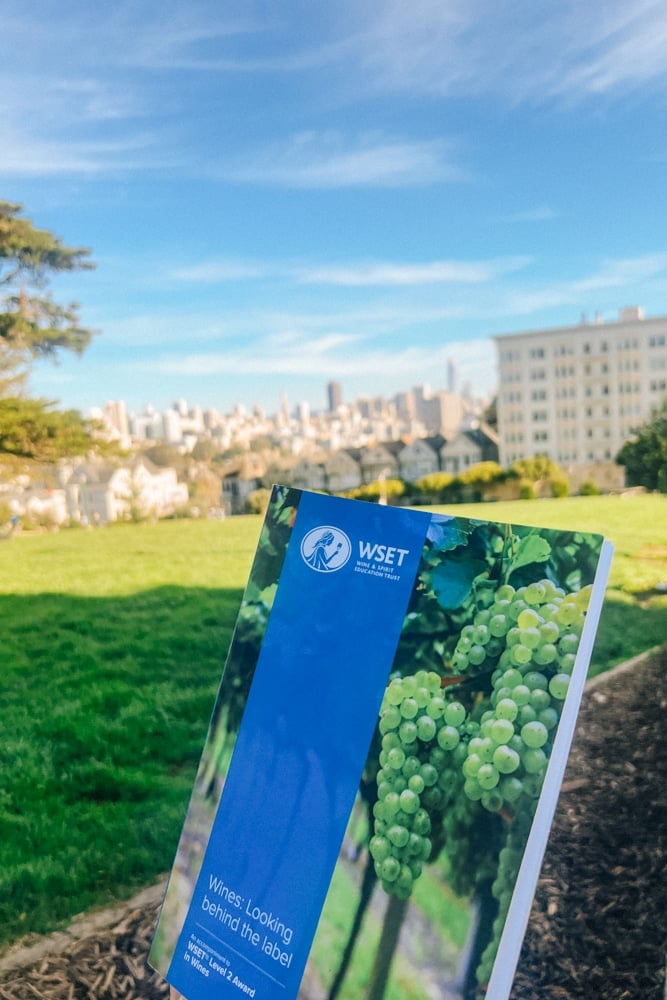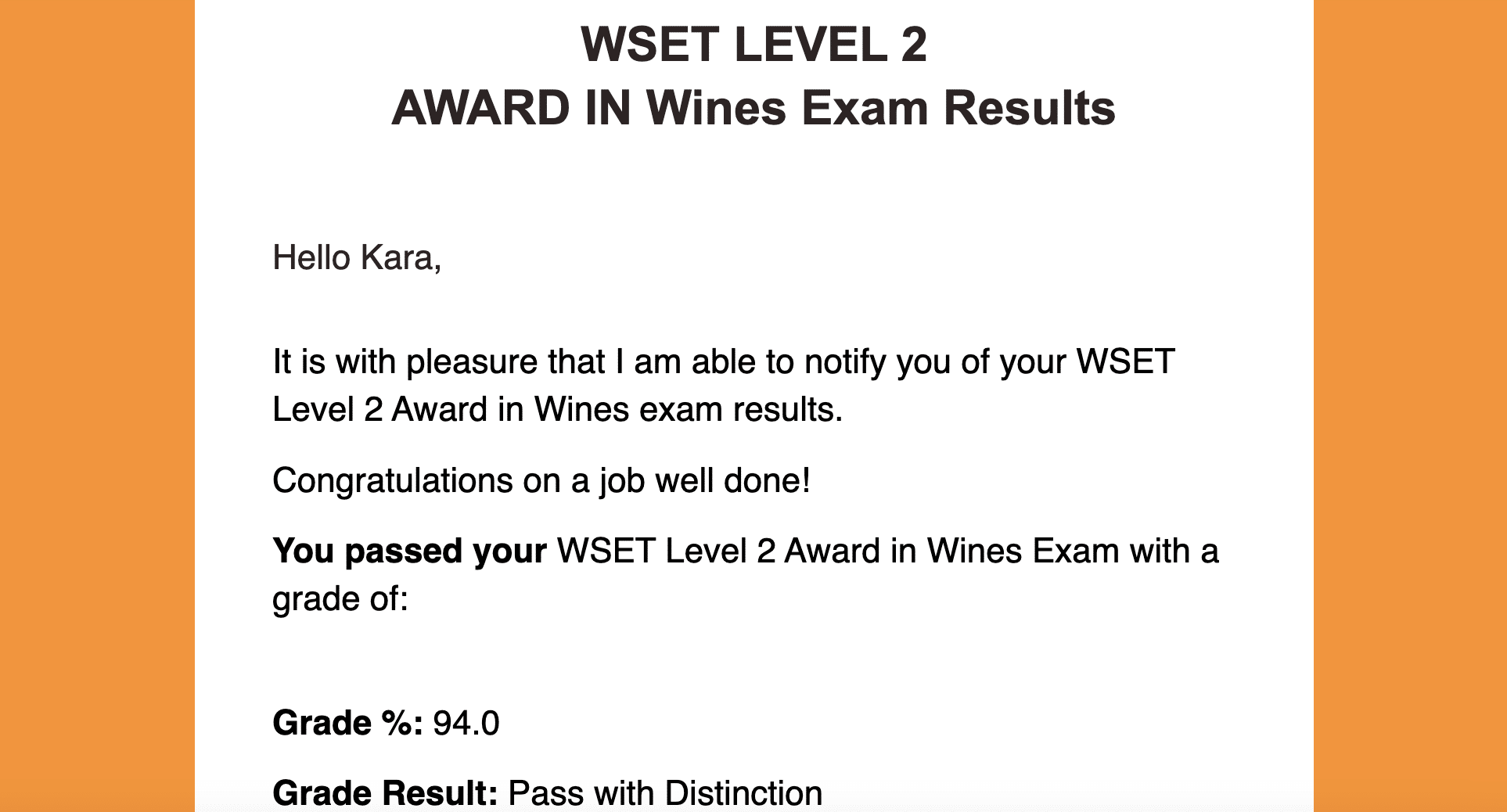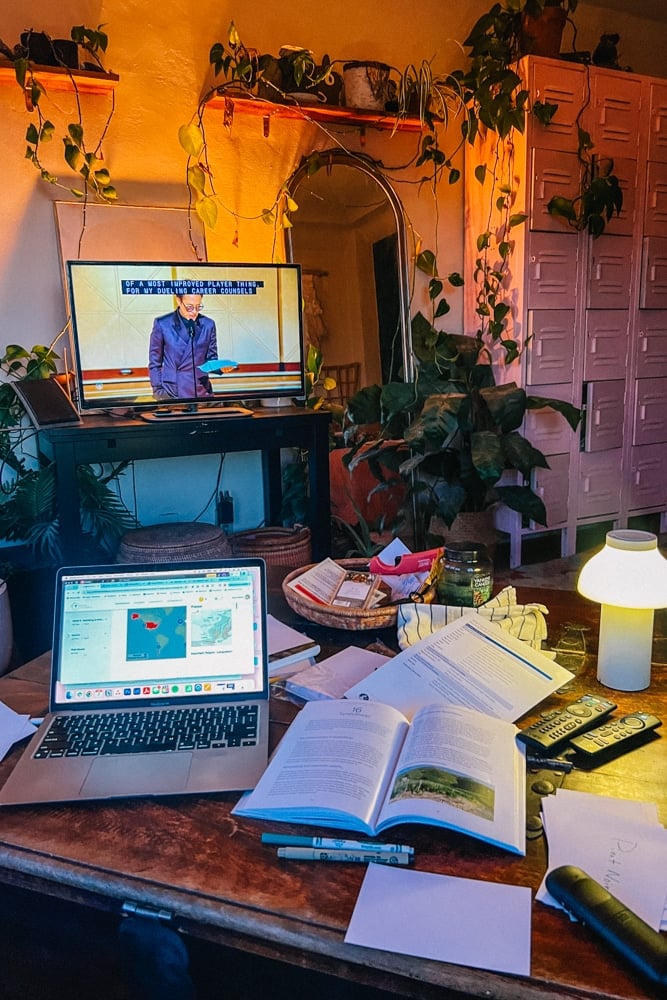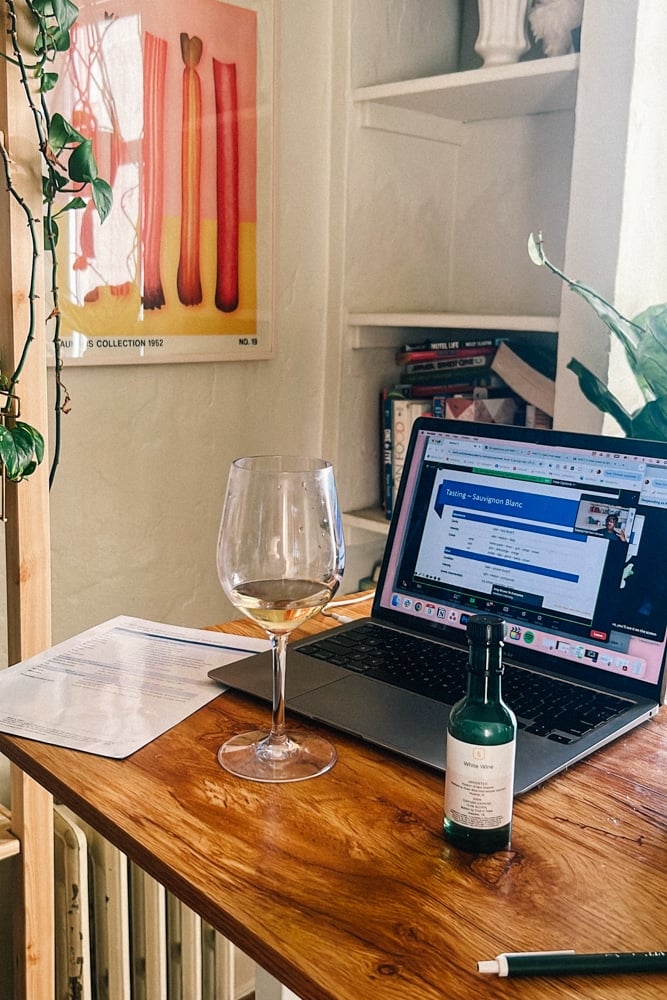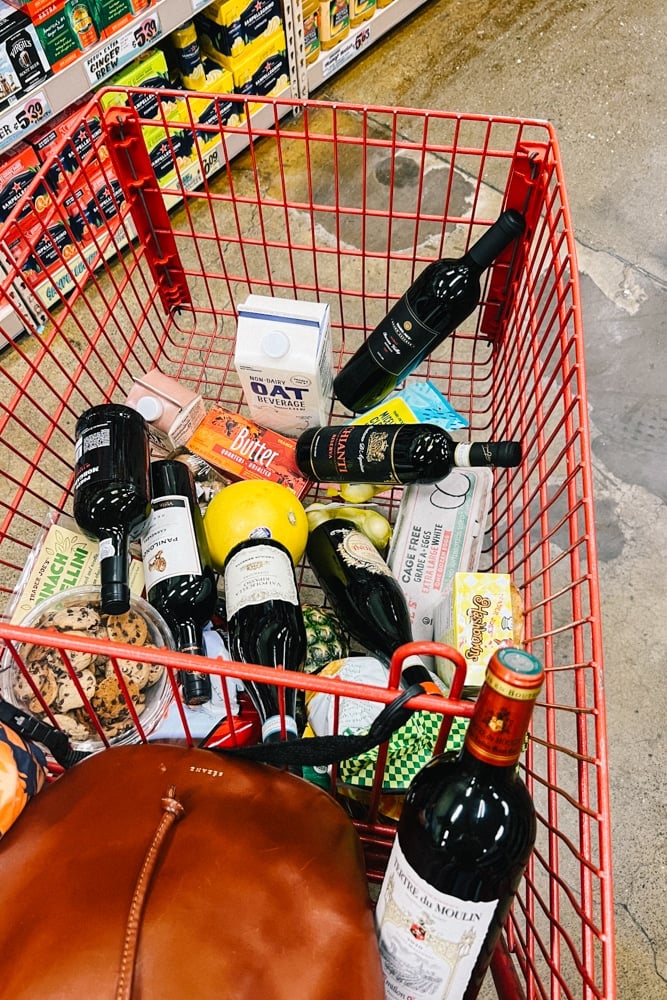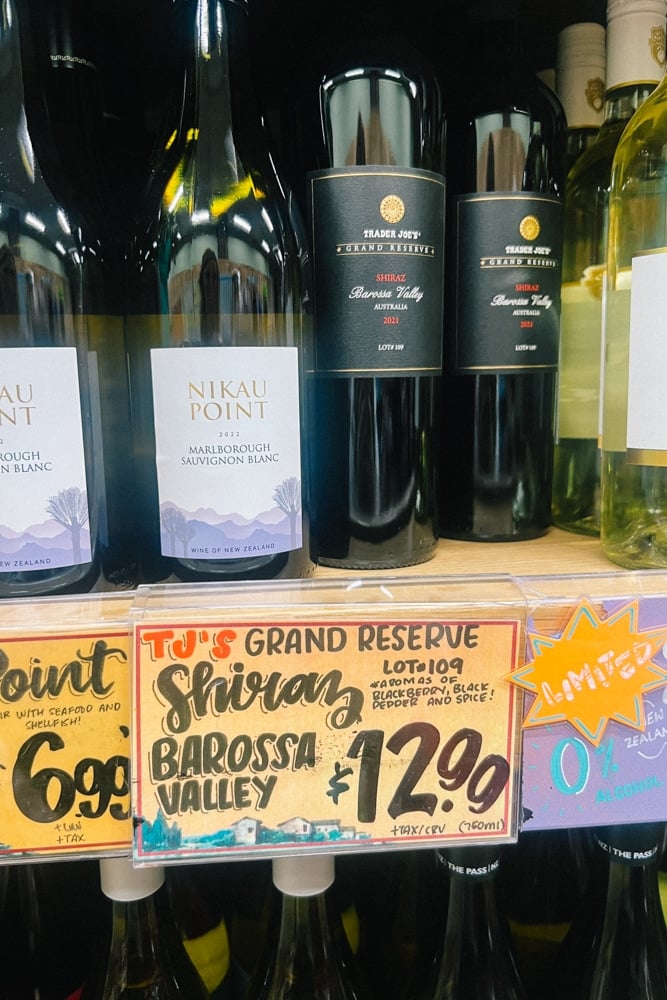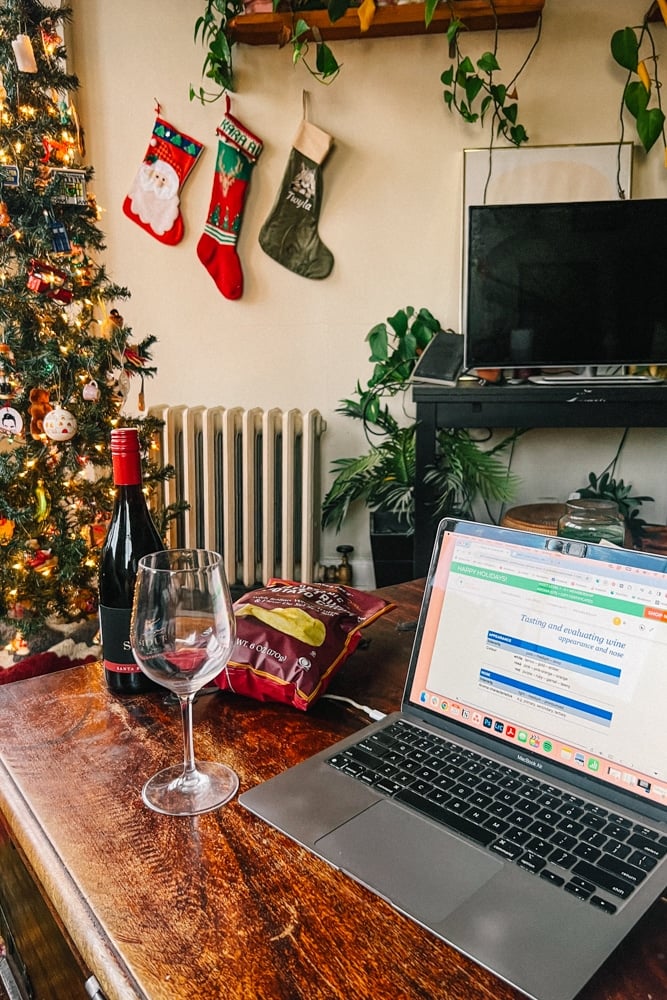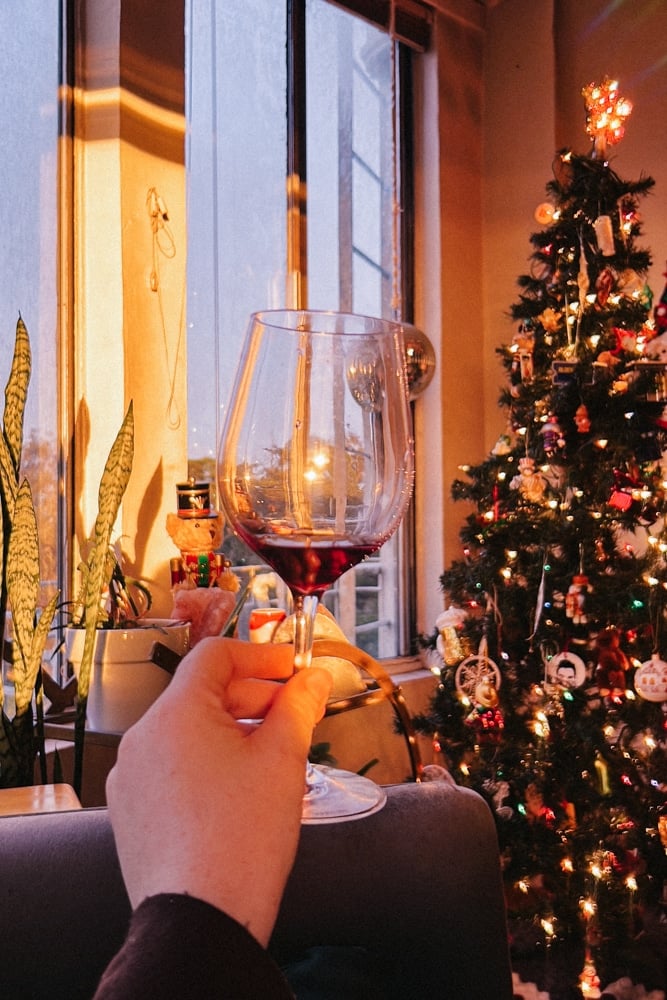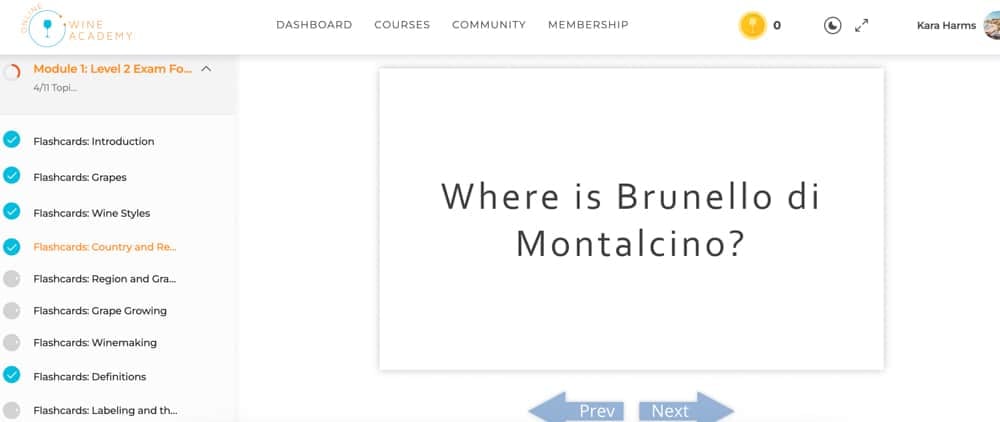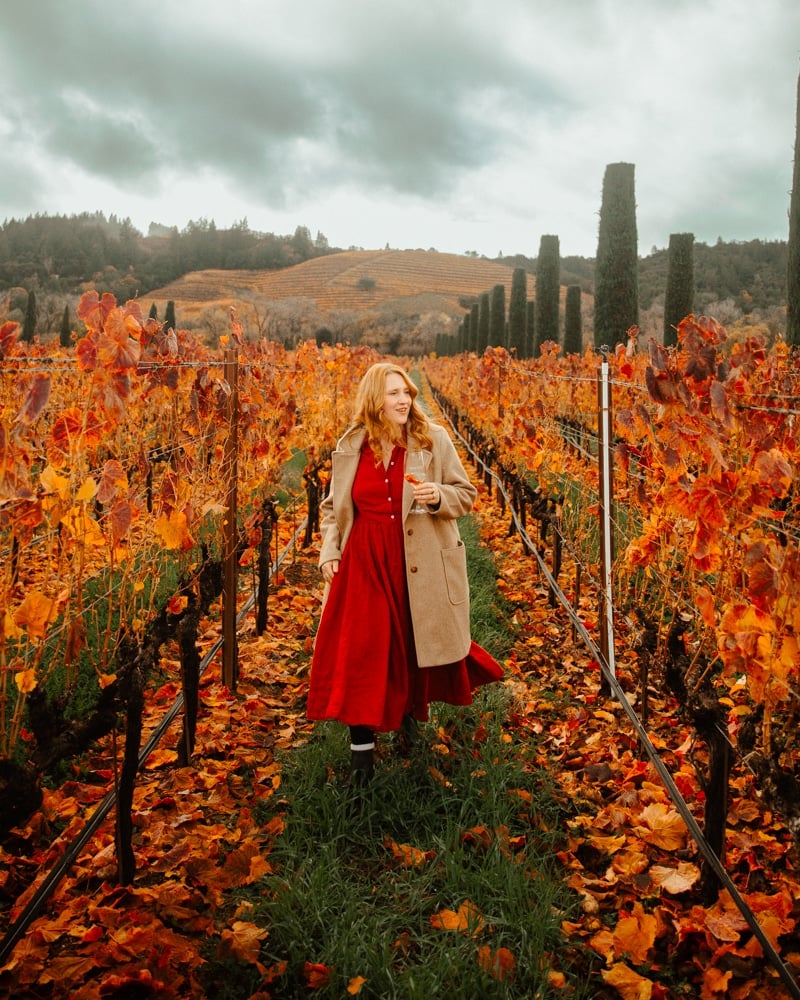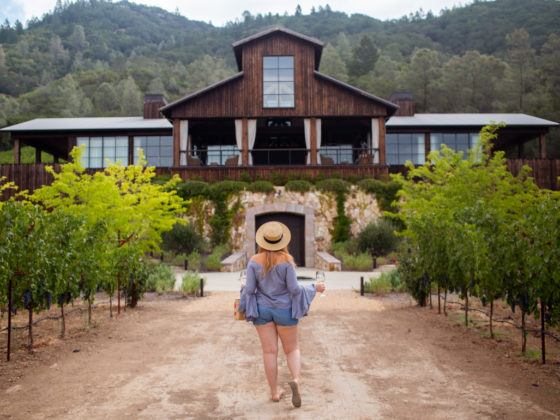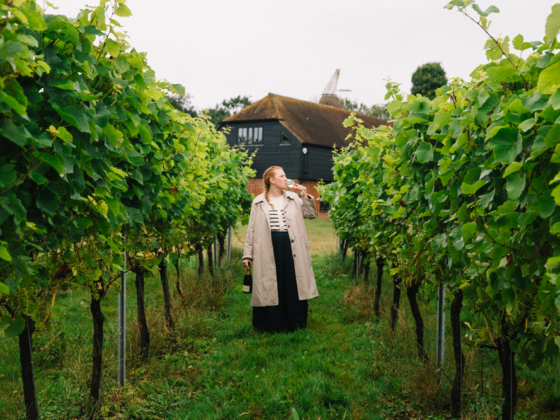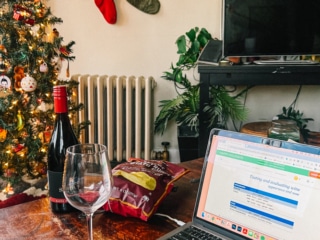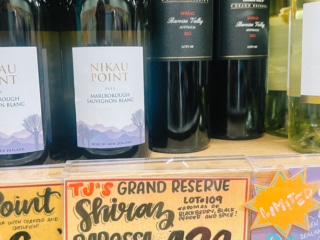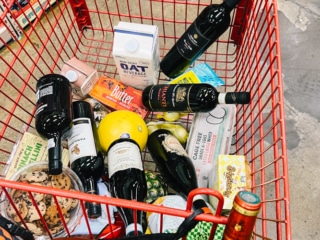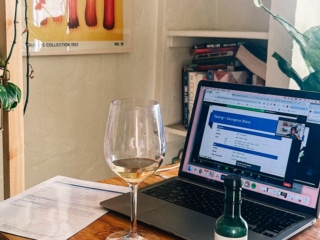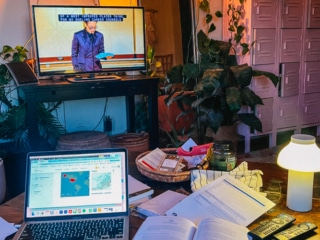This year after studying hard for the WSET 2 exam, I passed with distinction!! I earned a 94% on my exam and prepared enough that the exam itself took me under 10 minutes to actually complete on exam day.
I was incredibly nervous about the exam questions and spent way too much time hunting around the internet looking for tips, so I decided I should create one comprehensive guide for fellow students to help you save time (and get back to studying!) Here’s all the WSET 2 exam tips you need to know in order to pass with flying colors.
First, a little background on me! I’ve lived in San Francisco for almost 10 years and am a travel blogger. After finding myself up in Sonoma or Napa basically every month or so working with wineries and local tourism boards (Healdsburg, Napa, etc) I realized I wanted to level up my wine expertise.
I also really love wine and am very well versed in California wine, but absolutely lacked education on wine outside my state. That’s what brought me to WSET.
Thankfully, I absorbed enough wine education to fully skip WSET level 1. I’m still happy I didn’t take WSET 1 since I didn’t need to do it, but this also meant when it came time for my WSET 2 exam, I’ve never actually taken one through the school before so I wasn’t sure what their exam style was like.
So, let’s start there.
What Is The WSET Level 2 Exam Like?
The exam for level 2 course is all online and doesn’t require doing blind tasting notes in real life. That starts in level 3! This exam is all multiple choice questions and you have one hour to complete the exam.
Truthfully, I found myself completing it in record time of about 10 minutes since I prepared well and found it pretty easy. (I was a little surprised, I was like “wait, really? Was that a trick how did I complete this so fast?!”
I got 3 questions wrong and while the exam results won’t tell you what questions you answered incorrectly, I think I know and I’m still a little mad at myself for getting them wrong (I overthought those questions – the lesson is to go with your gut and the answer is probably easier than you think it is!)
When taking the exam online you have to be in a “clean” room which means no wine bottles or food labels of any kind, no posters or art, anything that the exam people could take as cheating. Nobody can enter the room, either.
I live in a small apartment and wasn’t able to go to an all-white room like the exam asked me to. Instead, I covered up my pantry shelf, took down my wall art, locked my cat in the bathroom and sent my husband away so I wouldn’t be bothered during the exam. You’ll have to record your whole exam space, so be prepared for that when taking your exam.
I was happy and surprised to find that the real exam was literally exactly like all the practice exams WSET offers students. So, that’s why it was a breeze.
Tips For Passing Your WSET 2 Exam
At the end of the day, if you just study hard you will pass this exam but these are tips I think are useful to know if I had to do it all again.
1. Undergo Extra Study Time For WSET
There are set dates you can take the WSET exam and while most people opt to take their exam as close to the end of their course, I recommend waiting about 4 weeks later to take it.
I felt like I wanted extra study time and it totally paid off. This Virgo wasn’t going to settle for a simple “pass” I wanted to get as close to 100% as I could!
I used the extra few weeks to sample more wine varietals that weren’t offered in the course, but were in the book, and used that time to take as many practice tests as I could.
My husband also helped me study — I would memorize a chapter and we’d do drills together on all the information I could remember about that wine style or region (ex: Cabernet Saivugon in Chile can lean to more minty forward flavors!) He ended up absorbing so much secondhand knowledge, I had him do a practice test and he got a 45% on it, and he wasn’t even properly taking the course.
This made me feel a lot better about my chances of passing. If he could get a 45% by just helping me studying a little, I felt like I could do better. But still – I used every chance I could get to study! It took up a to of my life this winter.
2. Know How Climate Impacts Wine
My big “aha moment” happened when it fully clicked for me that the climate has a direct impact on how wine style and once you know what a climate is like in a region, you will know what the wine is like (and vice versa!)
- Cool, coastal usually means more acidic, more green fruits, more minerality, little to no peppery notes. For whites, this usually means less malaetic conversion and the wines are usually in stainless steel.
- Hot, warm, inland usually means less acidic, more ripe fruits, more pepper notes, more stone and tropical fruits. For whites, more lees and more malaetic conversion (aka “malo”).
It’s not just knowing that Australian Syraz is going to have more baked fruits and peppery notes than a Rhône Valley Syrah but also understanding that’s because it’s way hotter in Australia. That heats literally makes their version of the same grape and wine different than those making wine in France.
3. Memorize Maps!
To extend on the tip above, I highly recommend every time you are learning about a region and/or wine varietals, that you look at a map AND a local photo of where the wine region is.
Even if you aren’t great at maps or directions, seeing photos of Hunter Valley and dry it can look during drought season, or Walker Bay and how foggy it can get in the mornings WILL help you wrap your head around the climate of that area. Thngs like knowing that Carneros in Napa is right along the Bay can help you build context clues when it comes to the exam.
It’s helpful to memorize every wine and region 100%, but, if you ever forget what makes an Albariño unique (for example), you can picture the coast of Spain where it’s grown and tie together all your lessons to get the correct answer on the test: coastlines, cool ocean breezes… probably benefits from diurnal shifts. Most likely an Albariño has high acidity and more crisp, green fruit flavors… so if you have 4 multiple-choice questions and 3 of them don’t fit that flavor profile, you know which answer has to be correct.
Knowing where a location is on a map AND how climate work will help you ace your test. And save you a lot of blank memorizing and help you instead understand.
4. Varitials Usually Grow In Pairs/Groups
It’s not a steadfast rule but generally, wine grapes grow in groups and this can be helpful to know when you are memorizing regions and what wine is grown there.
For example, Pinot Noir, Chardonnay and Pinot Meunier typically require similar climates. If you know that Sonoma makes great Pinot Noir, you also know that they must grow cool climate Chardonnays as well (even if you didn’t memorize that fact – simply knowing they go in pairs helps!)
I just went on a wine press trip to England (yes, England makes wine!) and they primarily produce sparkling wine. I instantly knew that had to grow mostly Pinot Noir, Chardonnay and Pinot Meunier since that’s the grapes traditionally used in Champagne in Champagne and sparkling wines. I knew we wouldn’t be tasting any Cabs or Merlots here since the climate just doesn’t make sense.
5. California = Oakey
Apparently Californians make their wines more oakey compared to other regions. Chapter after chapter, practice test after practice test kept mentioning this and it actually came up on the actual exam.
There’s not a lot to expand on this tip, but for the sake of the exam if there’s any questions about oakey wine and region, the answer is probably California.
6. Everyone Has It Hot For France
The wine world is obsessed with France and in WSET’s mind, France always makes the best of everything (I would disagree, there are so many other regions that are outdoing France in a lot of wines) BUT for the sake of this exam, when in doubt, focus on France.
I spent extra time studying all the wine regions in France, their climates and their labels. I found the exam did focus a lot of France vs other regions of the world, so I was happy I did that. You still need to know where Walker Bay and what kind of wine they make, but knowing what Sancerre is will have a higher chance of being on the exam.
7. Memorize Regions And How To Read Wine Labels
A big component to wine education is learning what wine styles are created in what regions. So many regions around the world, especially Old World wines in Europe, had very strict rules and regulations on their grapes and wine-making styles.
Understanding that when someone says they like a Burgundy wine they usually mean a Pinot Noir but a Chablis means a specific northwest corner of Burgundy, France. Or, that a Borduax probably means a Cabernet and/or Merlot.
This regional information is key for passing this exam. I cannot stress how important it is to memorize these regions and wines they produce. It will be the bulk of your test.
You also need to know how to read wine labels. All the designation of origin information will also be important to know for the exam and there will be questions on labels specifically. Don’t overlook these chapters when studying.
8. Take Practice Tests Only By WSET
There’s a ton of other practice exams and study books out there, but don’t waste your time or money on them. WSET structures their exam questions in a very specific format, and their practice tests and study material is designed to help you pass their questions.
Taking practice exams in other formats or styles may lead you to not being able to answer the exam questions correctly.
I used the book and the practice exams online. I took practice tests over and over again until I aced every single on. I used their flashcard features to study, this was especially helpful on long trips. I would just spend the entire flight doing flash cards until I memorized each deck available.
ONLY USE THE WSET TOOLS!!
9. Try As Many Wines As You Can
You will be provided wine bottles with the course for the live training section, but you’ll need to budget extra time and money to trying other wines outside what was provided in the course. How are you suppose to know about a wine if you’ve never tried it?
I found it to be so much easier to go chapter by chapter and taste the wine as I was learning about the region. This helped me recall that information much better. For instance, when I had a question about Tokaji Aszú, I was able to remember how it tasted and what the label looked like.
Tasting as many wines as you can will help you to connect the dots between the wine, where it was produced and the tasting notes. You can then learn how to tie this back to the climate section of these tips and be totally set up to ace the quiz.
I spent a LOT of time at Total Wines and Trader Joes (along with a few local wine shops) to hunt down all the wines that were on the exam. I did spend a lot of extra money on this, but I truly don’t think I would have got such a great score if I didn’t try all these wines.
So, those are my tips!! I hope you ace your WSET wine exam! If you have more tips to add, drop them below so everyone can see them and we can all pass together!


